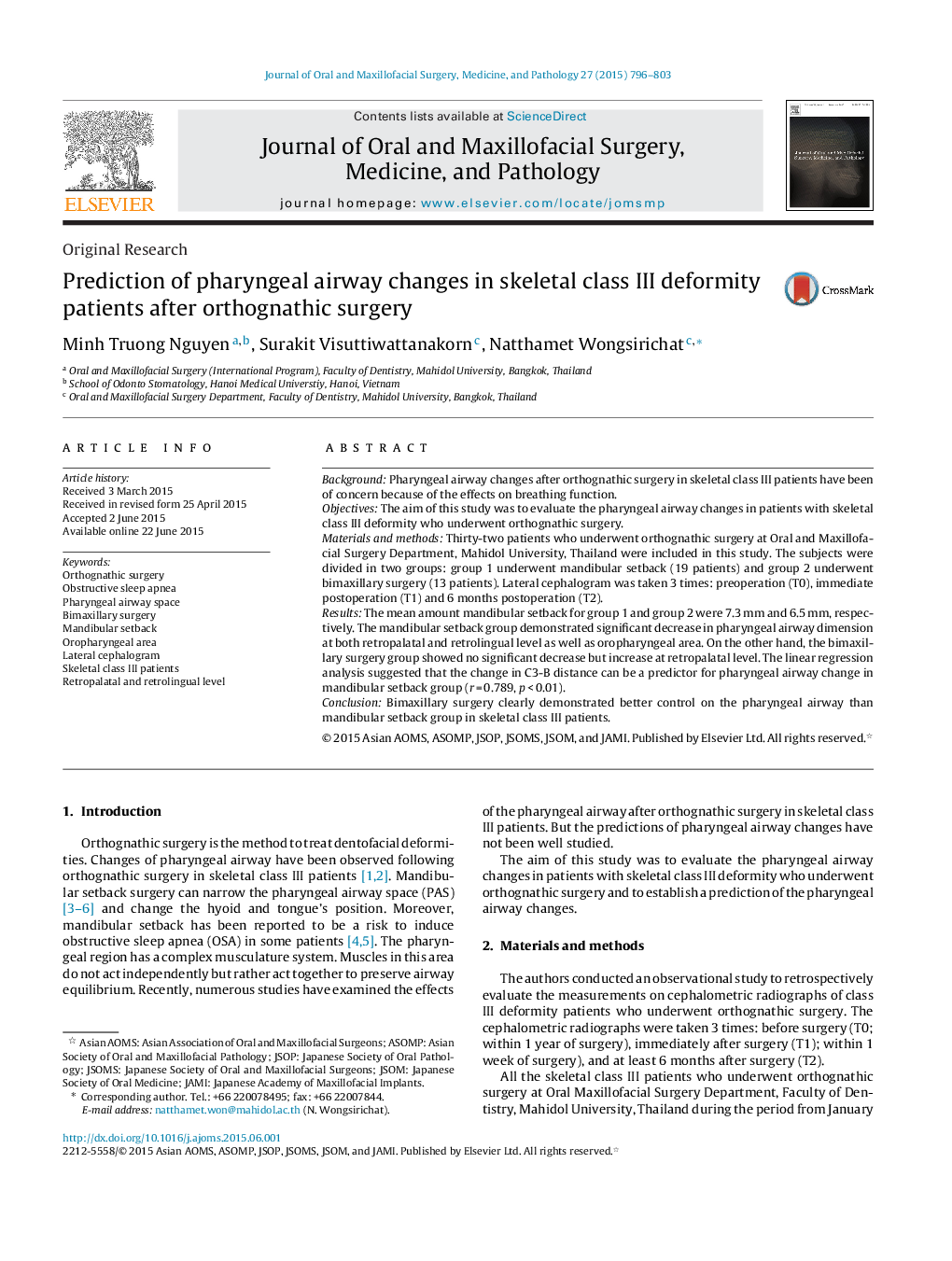| Article ID | Journal | Published Year | Pages | File Type |
|---|---|---|---|---|
| 3160384 | Journal of Oral and Maxillofacial Surgery, Medicine, and Pathology | 2015 | 8 Pages |
BackgroundPharyngeal airway changes after orthognathic surgery in skeletal class III patients have been of concern because of the effects on breathing function.ObjectivesThe aim of this study was to evaluate the pharyngeal airway changes in patients with skeletal class III deformity who underwent orthognathic surgery.Materials and methodsThirty-two patients who underwent orthognathic surgery at Oral and Maxillofacial Surgery Department, Mahidol University, Thailand were included in this study. The subjects were divided in two groups: group 1 underwent mandibular setback (19 patients) and group 2 underwent bimaxillary surgery (13 patients). Lateral cephalogram was taken 3 times: preoperation (T0), immediate postoperation (T1) and 6 months postoperation (T2).ResultsThe mean amount mandibular setback for group 1 and group 2 were 7.3 mm and 6.5 mm, respectively. The mandibular setback group demonstrated significant decrease in pharyngeal airway dimension at both retropalatal and retrolingual level as well as oropharyngeal area. On the other hand, the bimaxillary surgery group showed no significant decrease but increase at retropalatal level. The linear regression analysis suggested that the change in C3-B distance can be a predictor for pharyngeal airway change in mandibular setback group (r = 0.789, p < 0.01).ConclusionBimaxillary surgery clearly demonstrated better control on the pharyngeal airway than mandibular setback group in skeletal class III patients.
